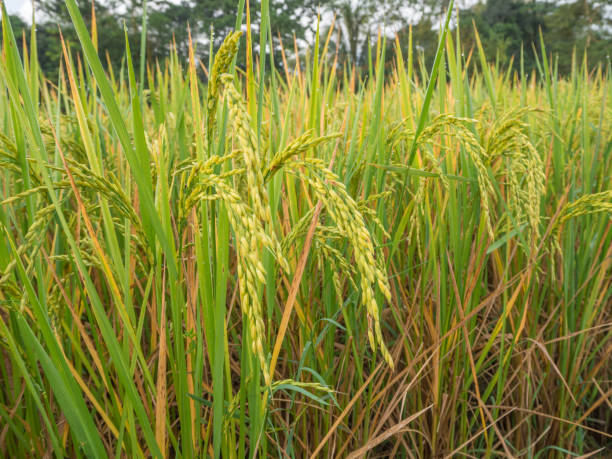Crop yield is a critical measure of agricultural productivity. It refers to the amount of crop harvested per unit of land area and plays a key role in determining farm profitability, food supply, and overall agricultural sustainability. As global food demand continues to rise due to population growth, improving crop yield has become a top priority for farmers, agronomists, and policymakers alike.
In today’s competitive and climate-sensitive agricultural environment, maximizing crop yield requires a combination of traditional wisdom and modern technology. This article explores the key factors affecting crop yield and provides practical strategies for improving it.
Understanding Crop Yield
Crop yield is typically measured in kilograms per hectare (kg/ha) or bushels per acre and depends on various factors including crop type, soil condition, weather, and management practices. It is influenced by both genetic potential and environmental conditions.
While a plant variety may have high-yielding potential, that potential can only be realized if the crop is provided with optimal growing conditions and managed properly throughout the growth cycle.
Factors Influencing Crop Yield
Several interrelated factors influence crop yield:
-
Soil Health
Fertile, well-drained soil with proper texture and pH is essential for root development and nutrient uptake. Poor soil conditions often lead to stunted growth and reduced yields. -
Seed Quality
High-quality seeds with strong germination rates and resistance to pests and diseases can significantly impact yield outcomes. -
Climate and Weather
Temperature, rainfall, humidity, and sunlight all play critical roles in plant development. Extreme weather events such as droughts or floods can devastate crops. -
Water Management
Inadequate or excessive irrigation affects nutrient availability and can lead to diseases or poor plant health. -
Nutrient Management
Balanced fertilization ensures plants get essential macro and micronutrients. Deficiencies or imbalances can limit growth and productivity. -
Pest and Disease Control
Insect pests, fungi, bacteria, and viruses can destroy crops or reduce their market value if not managed effectively. -
Crop Rotation and Diversity
Continuous monoculture can deplete soil nutrients and increase pest risks. Rotation helps maintain soil fertility and reduce disease incidence.
Strategies to Improve Crop Yield
To achieve maximum crop yield, farmers must adopt integrated management practices that address the above factors systematically.
1. Soil Testing and Amendment
Regular soil testing helps determine pH levels, organic matter content, and nutrient deficiencies. Based on the results, farmers can apply lime to correct soil acidity or organic matter to enhance soil structure. Proper fertilization, tailored to crop needs, ensures optimal nutrient availability throughout the growing season.
2. Use of Certified Seeds
Investing in high-quality, certified seeds ensures better germination rates and resistance to local pests and diseases. Modern hybrids and genetically improved varieties often outperform traditional varieties in both yield and resilience.
3. Efficient Irrigation Practices
Using irrigation systems like drip or sprinkler irrigation helps apply water directly to the root zone, minimizing wastage and promoting consistent soil moisture levels. Monitoring weather forecasts and using soil moisture sensors can further optimize water use.
4. Integrated Pest Management (IPM)
Instead of relying solely on chemical pesticides, IPM combines cultural practices, biological control, and selective pesticide use to manage pests sustainably. Scouting fields regularly for early pest detection and using natural predators can reduce crop loss significantly.
5. Precision Agriculture
Modern technologies like GPS, drones, and satellite imagery enable precision agriculture. Farmers can analyze field variability, apply inputs accurately, and monitor crop health in real-time, leading to better decision-making and increased crop yield.
6. Timely Planting and Harvesting
Planting crops at the optimal time ensures they benefit from favorable climatic conditions. Delayed planting can expose crops to adverse weather or pest pressures. Similarly, timely harvesting prevents losses due to over-ripening or damage from late-season diseases.
7. Cover Cropping and Mulching
Cover crops like legumes improve soil fertility and suppress weeds, while mulching helps retain soil moisture and regulate temperature. Both practices contribute to healthier soil and higher productivity in the main crop.
8. Training and Education
Farmer training programs on best agronomic practices, climate-smart agriculture, and sustainable input use can empower farmers with the knowledge needed to improve crop yield. Peer learning and extension services also play a vital role.
Role of Government and Technology
Governments can support yield improvement through research and development, subsidies on farm inputs, crop insurance, and access to credit. Digital platforms and mobile applications are increasingly used to provide farmers with real-time advice on weather, pest threats, and nutrient management.
Artificial intelligence and machine learning are now being used to predict yield outcomes, recommend agronomic actions, and optimize input usage based on big data analytics.
Future Outlook
With climate change and population pressures intensifying, the need to improve crop yield sustainably has never been more urgent. Emerging innovations such as vertical farming, hydroponics, and gene editing hold promise for increasing production without expanding farmland.
However, the most immediate gains can still be achieved through better farm-level practices and improved access to information and technology.
Conclusion
Improving crop yield is a multifaceted challenge that demands a combination of traditional knowledge, modern science, and policy support. By focusing on soil health, seed quality, water and nutrient management, and pest control, farmers can significantly enhance productivity and profitability.
In an era where every harvest counts, adopting the right strategies to maximize crop yield is essential—not just for farmers, but for food security and global sustainability.







0 Comments